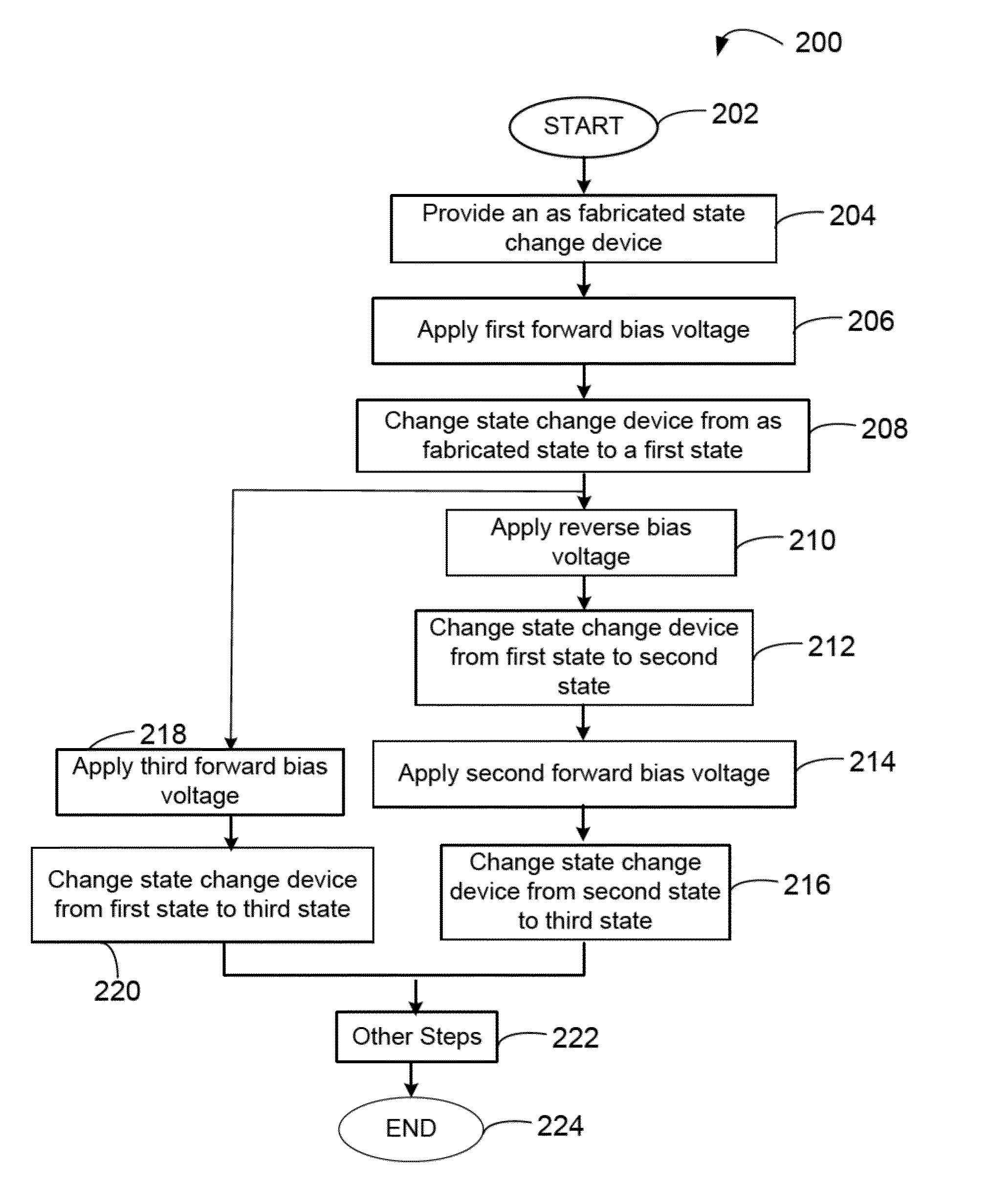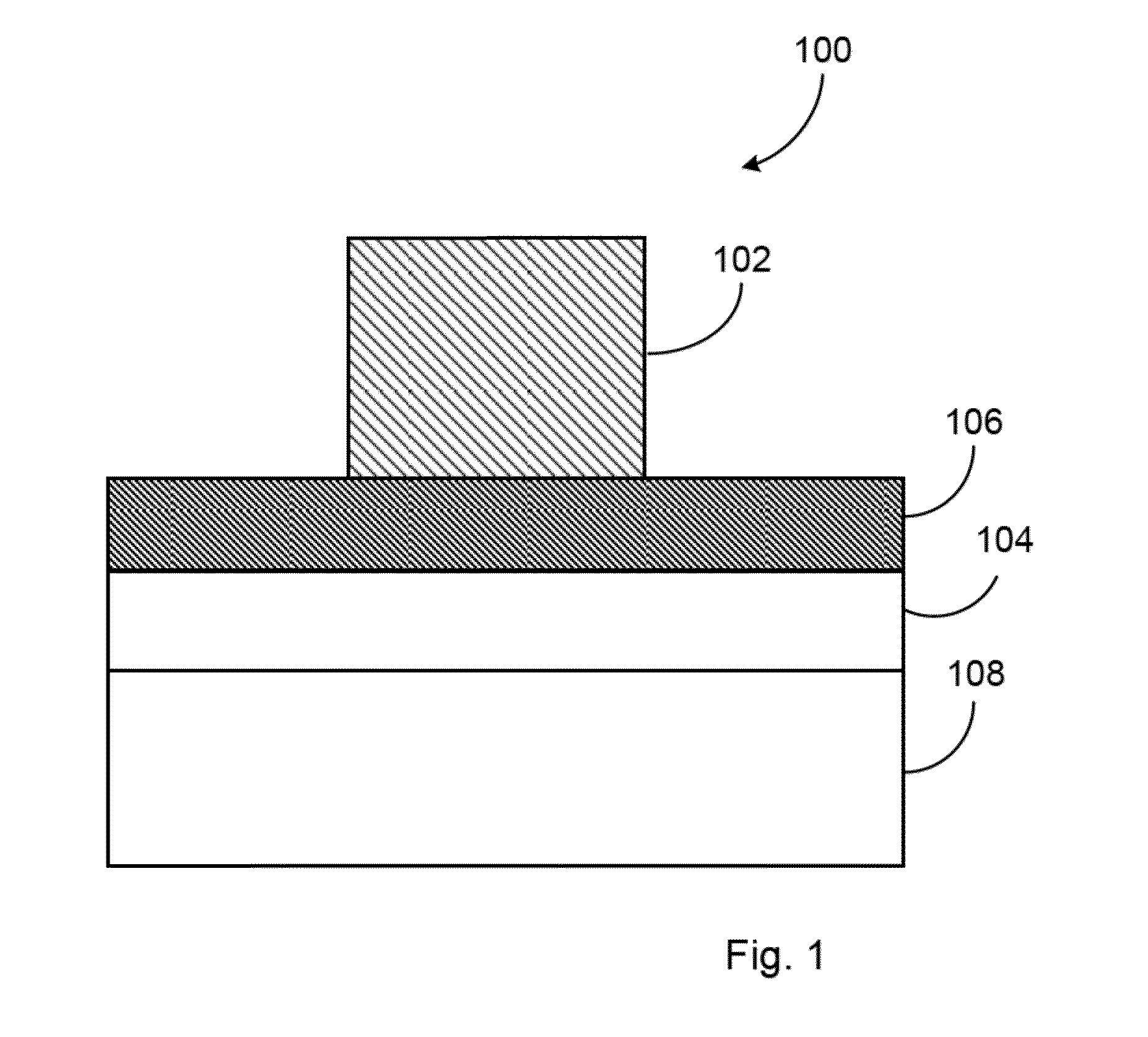Multi-level cell operation using zinc oxide switching material in non-volatile memory device
a zinc oxide switching material and multi-level cell technology, applied in static storage, information storage, digital storage, etc., can solve the problems of increasing power dissipation, reducing device performance, and non-scaling of sub-threshold slopes
- Summary
- Abstract
- Description
- Claims
- Application Information
AI Technical Summary
Benefits of technology
Problems solved by technology
Method used
Image
Examples
Embodiment Construction
[0019]The present invention is generally related to state-change devices, for example, resistive switching devices. More particularly, embodiments according to the present invention provide a programming method for a multi-level cell. Embodiments of the present invention have been applied to non-volatile memory devices using aluminum doped zinc oxide (AZO) as a conductor material and a zinc oxide material as a switching material, but it should be recognized that the present invention can have a much broader range of applicability.
[0020]Embodiments of resistive random access memory devices can be programmed by applying a voltage across the electrodes to cause a resistance change in the resistive switching material or the state-change material. The resistance change or switching can be dependent on an amplitude and polarity of the voltage applied. Depending on the device and the resistive switching material, embodiments of multilevel devices can be achieved by applying voltages of dif...
PUM
 Login to View More
Login to View More Abstract
Description
Claims
Application Information
 Login to View More
Login to View More - R&D
- Intellectual Property
- Life Sciences
- Materials
- Tech Scout
- Unparalleled Data Quality
- Higher Quality Content
- 60% Fewer Hallucinations
Browse by: Latest US Patents, China's latest patents, Technical Efficacy Thesaurus, Application Domain, Technology Topic, Popular Technical Reports.
© 2025 PatSnap. All rights reserved.Legal|Privacy policy|Modern Slavery Act Transparency Statement|Sitemap|About US| Contact US: help@patsnap.com



